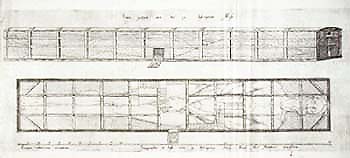Benito Arias, called Montano (Benedectus Arias Montanus), was a Spanish priest and scholar, who was sent by Philip II to Antwerp to edit the Polyglot Bible of 1572, printed by Plantin. According to Samuel Hartlib, Montano ‘was persecuted and imprisoned by the Inquisition for that excellent Work of his of Translating the Bible which tended soe much to the good of Christendome the renowne of the king of Spain and the credit of Popery itself’ (Hartlib Papers, 28/2/58B [Ephemerides, 1653]). Montano was indeed charged with heresy but was acquitted.
Montano’s stay in Antwerp had an important influence on his interest in mathematics. Plantin sold instruments and globes from the Louvain workshop associated with Gemma Frisius, particularly globes by Gerard Mercator and mathematical instruments by Gualterius Arsenius. Montano maintained his contact, through Plantin, with the workshop after he had returned to Spain and he arranged the purchase of instruments for Philip’s collection.
One of the tracts included in the Antwerp Polyglot was republished as Antiquitatum Iudaicarum. Montano devotes more space to the structure and fabric of Solomon’s Temple than to Noah’s Ark, putting forward a design that came to represent an alternative to that of Villalpando (see catalogue no. 51 ). However the Temple and the Ark raised similar concerns about geometrical proportions, divine design and sacred measures.
Montano’s Ark took the form of a three-storied rectangular box, with one door and window, and a curved roof. He combined the two ideas of the proportions of the Ark being those of a man and the story of the Flood being an allegory of man’s redemption, by illustrating the Ark as the coffin of Christ. As a result, the body of Christ, marked with the stigmata, fitted exactly within the proportions of Montano’s Ark.
Montano’s Temple was an influential design, especially for those who were not drawn to the more extravagant elaboration of Villalpando. Philip II appointed Montano as librarian of El Escorial, the monastery-palace whose design was itself related to contemporary reconstructions of the Temple.



